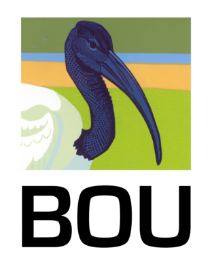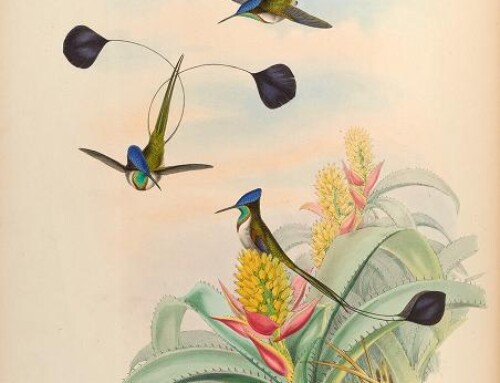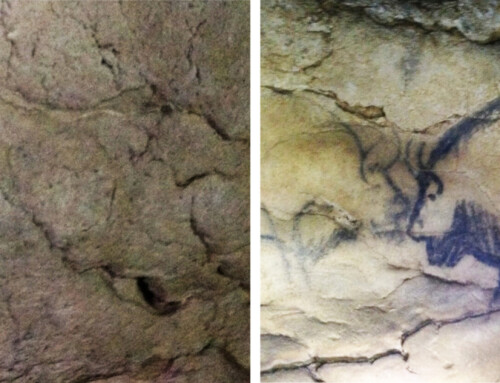Today’s language mavens often lament the new meanings given to words by the younger generations, while still acknowledging that this is how languages evolve. Just last week I had dinner with five McGill University undergraduates who used several common words that clearly meant something different to them than to me: flex, drop, vibe, low-key, and iconic. In fairness, to my own (boomer) generation ‘cool’ no longer referred to temperature, ‘groovy’ did not have anything to do with furrows, and ‘dig it’ did not involve shovels. Today, ‘iconic’ seems to mean ‘cool’, or ‘groovy’, or even ‘wonderful’ and not, as the OED says, “regarded as a representative symbol…worthy of veneration”.
Using the traditional definition, then, what are the iconic birds? Regionally, some of my choices would be:
- Common Loon and Canada Jay (Canadian wilderness)
- Bald Eagle (USA)
- Laughing Kookaburra and Emu (Australia)
- Kiwi (New Zealand)
- Common Cuckoo (Europe)
- Peafowl (India)
- Ostrich (Africa)

Some of those species are national birds (Bald Eagle, Kiwi, Canada Jay, Emu, Peafowl) but the others just seem ‘worthy of veneration’ because they are so visible and unique.
There are also some icons of extinction:
- Great Auk
- Ivory-billed Woodpecker (yes, they really are extinct)
- Dodo
and of conservation success:
- Capercaillie (locally in the UK)
- Whooping Crane (in North America)
- Nene and Laysan Albatross (in the Hawaiian Islands)
- Peregrine (worldwide)

…but I am at a loss to say why those species have risen to iconic status among the myriad other extinct species and those pulled back from the brink.
Among all bird species, surely the Common Cuckoo is iconic, maybe in a class of its own with the Peacock, not only for its distinctive (and to me haunting) spring song and mysterious burblings (Jin et al. 2025), but also because it has been a species of myth, mystery, and scientific study for millennia.
For reasons apparently lost in antiquity—or for no good reason at all—the Greek God, Zeus, lusting after his sister Hera, transformed himself into a distressed little cuckoo. When Hera picked up the pitiful bird to warm it at her breast, Zeus transformed back into human (or rather god) form and made love to her. Hera was so ashamed that she agreed to marry Zeus, but continued to suffer his philanderings.

In 1678, Francis WIllughby and John Ray (and both Aristotle and Aldrovandi, among others, before them) wondered where the cuckoo spent the winter, rejecting the idea that they hibernated:
What becomes of the Cuckow in the Winter-time, whether hiding her self in hollow Trees, or other holes and Caverns, she lies torpid, and at the return of the Spring revives again; or rather at the approach of Winter, being impatient of cold, shifts place and departs into hot Countrys, is not as yet to me certainly known. Aldrovandus writes, that it is by long observation found, that she doth in the Winter enter into the hollows of trees, or the Caverns of Rocks and the earth, and there lie hid all that season. Some (saith he) tell a story of a certain Country-man of Zurich in Switzerland, who having laid a Log on the fire in Winter, heard a Cuckow cry in it. … But seeing it is most certain, that many sorts of Birds do at certain Seasons of the year shift places, and depart into other Countrys… Why may not Cuckows also do the same? For my part I never yet met with any credible person that dared affirm, that himself had found or seen a Cuckow in Winter-time taken out of a hollow tree, or any other lurking-place.
And while they knew that the cuckoo was a brood parasite, they could not be sure how the hosts eggs or babies often disappeared.:
The Hedge-Sparrow [Curruca| is the Cuckows Nurse, but not the Hedge-Sparrow only… The Cuckow her self builds no Nest; but having found the Nest of some little bird, she either devours or destroys the Eggs she there finds, and in the room thereof lays one of her own, and so forsakes it. The silly bird returning, sits on this Egg. hatches it, and with a great deal of care and toil broods, feeds, and cherishes the young Cuckow for her own, until it be grownup and able to fly and shift for it self. Which thing seems so strange, monstrous, and absurd…

In 1896, Alfred Newton, in his Dictionary of Birds declared that:
No single bird has perhaps so much occupied the attention both of naturalists and of those who are not naturalists, or has had so much written about it, as this, and of no bird perhaps have more idle tales been told…but, besides the known facts of its economy, there are certain suppositions in regard to parts of its history that are unknown, which suppositions are apparently probable enough to deserve notice.
Some of the things that Newton felt ‘deserve notice’ were the ongoing debates about how the cuckoo got its eggs into domed nests (laid directly or placed by the bill?), hiw its eggs matched those of its host (altered by the individual cuckoo to match or constant within a female who then chose the appropriate hosts?), and whether the nestling cuckoo could eject the host’s babies. These questions were resolved in the twentieth century starting with the careful observations and cinematography of Edgar Chance (1922). Then, in the last quarter of the twentieth century, Nick Davies answered these and further questions about the cuckoo through some clever and carefully conducted experiments. With their innovations of cinematography and experimentation to study the cuckoo, the work of Chance and Davies is truly iconic.
Further Reading
Davies, N. (2015) Cuckoo: Cheating by Nature. Bloomsbury Publishing USA.VIEW
Chance, E.P. (1922) The cuckoo’s secret. London, Sidgwick & Jackson, ltd.VIEW
Jin, S.-J., Lee, J.-W. & Yoo, J.-C. (2025) The structural function of the bubbling call of the female common cuckoo (Cuculus canorus). Ibis 167: 1018–1027. VIEW
Newton, A. (1896) A Dictionary of Birds. A & C Black, London.VIEW
Ray, J. (1678) The Ornithology of Francis Willughby. John Martyn, London.VIEW
Schulze-Hagen, K., Stokke, B.G. & Birkhead, T.R. (2009) Reproductive biology of the European Cuckoo Cuculus canorus: early insights, persistent errors and the acquisition of knowledge. J Ornithol 150: 1–16.VIEW
Image credits
Common Loon, Canada Jay, Bald Eagle, Rock Ptarmigan, Peacock, and Ostrich by the author
Common Cuckoo and Peregrine courtesy and copyright Bruce Lyon
All other images from Wikipedia Commons, in the public domain





